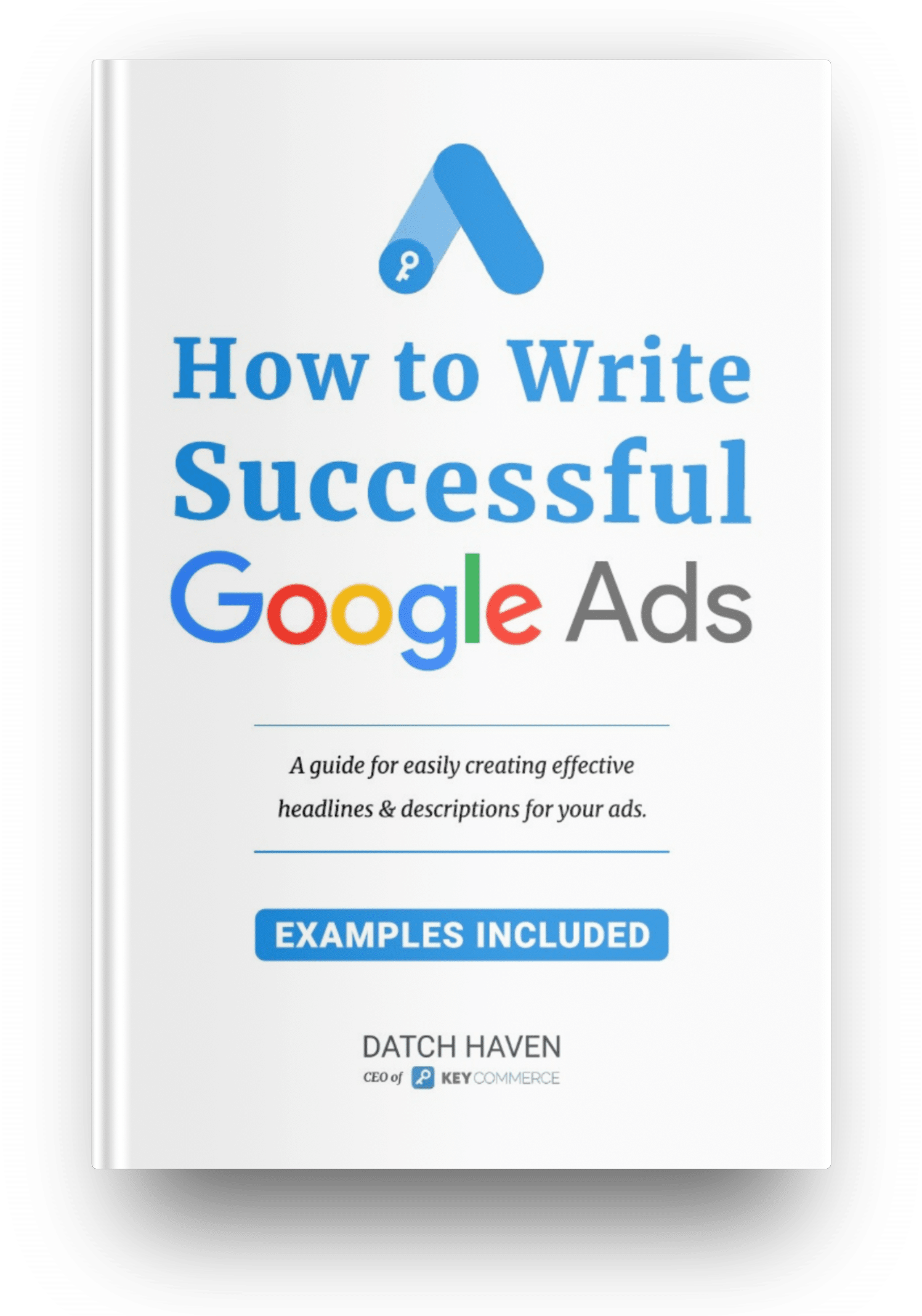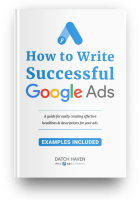What is Target Impression Share in Google Ads?
Target Impression Share (TIS) is an automated bidding strategy in Google Ads. It allows marketers to set a target for the percentage of impressions they'd like their ads to receive in relation to the estimated number of impressions available.
With this bidding strategy, advertisers can control the frequency with which their ads appear on Google search and display networks. They can set the target share of impressions they want their ads to receive.
The system will then automatically adjust bids to try and reach the target impression share. While taking into account other factors such as competition, keyword relevance, and budget.

Target Impression Share Formula
The formula for Target Impression Share is not a mathematical equation but rather a concept in Google Ads. If you had to put it down in writing, it would like like this:
- Impression Share =impressions/total eligible impressions
- Target Impression Share =target impressions/total eligible impressions
For example, if you set a target percentage of 50%, you want your ad to appear in half of the available impressions in your target market. Google Ads uses machine learning algorithms to determine the optimal bid for your ad to reach your desired goal.
You need to regularly monitor your campaigns and adjust your Target Impression Share percentage based on performance and advertising goals to ensure optimal results.
What is a good percentage of Target Impression Share?
No specific percentage of Target Impression Share is considered “good.” The optimal percentage is unique to each ecommerce store. It depends on various factors, such as your advertising goals, budget, and competition for your target keywords.
For example, if your business is Green Beach Bicycles and you want to make sure your ad shows up 90% of the time when people search your business, then you'd pick the TIS and bid strategy with a value of 90%.
A higher Target Impression Share percentage can increase visibility and help you reach more people, but it can also result in higher costs. On the other hand, a lower TIS percentage can save money but may limit the reach of your ads.
We recommend you start with a lower percentage goal and gradually increase it over time as you gain more insight into the performance of your campaigns.

When to use Target Impression Share?
Target Impression Share can be beneficial in a variety of situations in Google Ads, some of which include:
Increased brand visibility
If your goal is to increase brand awareness and reach a large audience, you can set a high TIS percentage to maximize your ads' visibility. This bid strategy can also help raise awareness of your brand. For example, let's say you run ads for a local clothing shop, but you're competing with larger fashion stores. You could use this strategy to ensure your brand shows up when customers run searches nearby.
When you want to improve your ads ranking
TIS can be useful for campaigns with brand terms when you absolutely need to have your ads ranking in the very top spots of Google. For example, let's say you want your listing to show every time a user searches for your brand. In this case, you can set the target to 100%. Google will then try to show your ad on 100% of the auctions within that campaign.
Competitive markets
If you are targeting competitive keywords and want to ensure your ads receive a high frequency of impressions, Target Impression Share can help you achieve this by bidding more aggressively for impressions.
Budget constraints
TIS can help you prioritize your budget towards the most valuable impressions. You can achieve this by setting a target for the maximum percentage of views you're willing to receive.
Increased control over ad placement
TIS gives you control over where your ads appear and the frequency with which they appear. Allowing you to make informed decisions about your advertising strategies.
When it's challenging to achieve a high-quality score
The TIS bid strategy can also be highly effective in situations where achieving high keyword quality scores is more difficult – such as a search campaign bidding on competitor-branded keywords. In this situation, keyword quality scores are likely to be low. This due to the low relevance of the target keywords with the search ad headlines/descriptions and the content of the advertiser's landing page. Therefore, setting the competitor-focused campaign to a TIS bid strategy is the most effective in gaining impression share over competitors.
How to set Target Impression Share as a bidding strategy?
Step 1 - Choose where you want your ads to appear

When enabling target impression share bidding, one other consideration you will need to make is which placement option to choose.
You can set bids to show your ad anywhere on the page, at the top of the page, or the absolute top of the page of Google search results.
Where you decide to show your ads will largely depend on your campaign's goal. More often than not, you will be utilizing this bidding strategy to work towards some exposure or awareness goal. Still, you should adjust your settings accordingly depending on what keywords you are bidding on. Also keep in mind what ad copy variations you are testing, and what your competition looks like.

It's important to note that the availability of page placement options may vary depending on the advertising network you are targeting (e.g., search network, display network).
Additionally, the competition for ad placements and the relevance of your ads to the keywords you are targeting will also influence where your ads appear.
Target Impression Share placement options
The available page placement options are:
- Anywhere on the page: Your ad may appear anywhere on the page, including the top, bottom, or side of the page. It can be beneficial for terms on which you already have strong, organic performance or when you want to build awareness for a new product launch.
- Top of the page: Your ad will receive priority placement at the top of the page. This placement can be a valuable solution for terms where you see exceptionally high competition levels. This method is a good option if you want to maintain exposure above the organic listing but still want to minimize the amount of spend you are directing to these terms.
- Absolute top of the page: Your ad will receive the highest priority placement, appearing above all other ads at the very top of the page. We recommend selecting “absolute top of the search results page” if you have competitors bidding on your brand keywords, are the manufacturer of your product, or would generally increase bids to show in first position.
Step 2 - Choose the percentage of the impression share to target
“Percent (%) impression share to target” is how often you want your ads to appear in the search page area you select when other people search for your keywords.
How to determine the percentage?
The percentage of Target Impression Share you should set depends on various factors, such as advertising goals, budget, and competition for your target keywords.
To determine the percentage, you need to consider the following factors:
- Advertising goals: What do you want to achieve with your advertising campaign? If you want to prioritize brand visibility and reach a large audience, set a higher target percentage. Set a lower % if you need to control your advertising costs.
- Budget: How much are you willing to spend on your advertising campaign? Setting a higher Target Impression Share percentage can result in higher costs, while a lower target can save on costs but limit your reach.
- Competition: How competitive is the market you are targeting? If there are a lot of competitors, you may need to set a higher percentage to ensure your ads receive a high frequency of impressions.
- Keyword relevance: How relevant are your ads to your target keywords? If your ads are highly relevant to the keywords, you could set a lower Target Impression Share percentage and still receive a high frequency of impressions.
Step 3 - Choose the maximum CPC bid limit
The Max cost-per-click bid limit is a cap on bids set by this bid strategy. It sets the maximum amount you'll pay for each click. Bid limits won't be used in Display-only campaigns.
We recommend taking your last 30-day average CPC for that campaign and then at least double it. Google cautions against setting this bid limit too low, as you may risk losing impression volume and blocking the campaign from reaching your impression share goals. On the other hand, we caution against raising it too high and overbidding on your branded terms.
Once you launch the bid strategy, monitor your search impression share and average CPCs over a few weeks. Then, if needed, adjust your bid limit to reach your impression share target.

How do I set bids for Target Impression Share?
Google Ads sets bids and tries to show your ad based on your choice of placement. It could be at the absolute top of the page, towards the top, or anywhere else on the SERP page.
For example, suppose you choose an Impression Share target of 75% on the absolute top of the page. In that case, Google will automatically set your CPC bids to push your ads to the top of the page for 75% of the total possible views it can offer.
However, you can also manually set your bids, and Google will adjust the bids as needed to help you reach your target.
To set bids for Target Impression Share in Google Ads, follow these steps:
- Log in to your Google Ads account.
- Select the campaign or ad group for which you want to set the TIS.
- Go to the “Settings” tab and click on the “Bidding” section.
- Under “Bidding strategy,” select “Target Impression Share.”
- Enter the percentage you'd like to set, representing the percentage of impressions you'd like your ads to receive in relation to the estimated number of impressions available.
- You can also specify a secondary bid amount, which is the max amount you're willing to pay per impression if your ads receive more than your target impression share.
- Save your changes.
Target Impression Share VS Manual CPC
Target Impression Share and Manual CPC (Cost-Per-Click) are two different bidding strategies available in Google Ads.
It allows you to set a target for the percentage of impressions you'd like your ads to receive. The system will then automatically adjust bids to try and reach the target, taking into account factors such as competition, keyword relevance, and budget.
Manual CPC, on the other hand, allows you to set a specific maximum cost-per-click bid for your ads. This strategy will enable you to manually determine the max cost for each click on your ad. Google will then show your ad when it determines a good chance of a click occurring and the bid amount is within your specified maximum CPC.
Which strategy to use depends on your advertising goals and the specific characteristics of your campaigns.
TIS is helpful if you want to prioritize brand visibility and control the frequency with which your ads appear. However, manual CPC can be useful if you want to manage your advertising costs and prioritize cost efficiency.
You can also use a combination of both strategies for different campaigns or ad groups within a campaign.
The benefits of using Target Impression Share in Google Ads
- Better control of advertising costs: Target Impression Share allows you to set a target percentage of impressions you want your ads to receive, giving you more control over your advertising costs.
- Improved brand visibility: By setting a higher target percentage, you can increase the visibility of your ads and improve brand recognition among your target audience.
- Better targeting: TIS gives you more control over where your ads appear, allowing you to prioritize placement on the pages that are most relevant to your target audience.
- Increased conversion potential: By prioritizing impressions, this strategy can help improve the frequency with which your ads are seen by your target audience, increasing potential conversions.
- Flexibility: Target Impression Share is a flexible bidding strategy that can be adjusted based on your performance and advertising goals, giving you more control over your advertising campaigns.
The drawbacks of using Target Impression Share
TIS is an automated bidding strategy in Google Ads that can be a valuable tool to help you optimize your bids for your advertising goals. However, it’s not always the best strategy in all cases.
When choosing the Target Impression Share bid strategy, you should evaluate at the campaign level to determine if you have enough data to make it work and if it will help you reach your goal.
If not, you might benefit from another bid strategy, a portfolio-level strategy, or even an account structure adjustment to leverage it later.
Automated bidding strategies do have some drawbacks; here are a few you need to consider:
- Limited reach: Setting a lower target can result in limited ad reach, which can be detrimental to your advertising goals.
- Increased costs: Setting a higher Target Impression Share percentage can result in increased costs, as you may need to bid higher to receive the desired number of impressions.
- Dependence on data quality: The auto-bidding algorithms rely on high-quality data to make accurate bids. If the data used by the algorithm is outdated or inaccurate, the bids made may not be optimal.
- Dependence on competition: Your ads impressions share may be affected by the competition in your target market, as a high level of competition can result in higher bid prices and lower Target Impression Share.
- Complexity: It can be a complex bidding strategy to implement and requires careful monitoring and adjusting to ensure optimal results.
- Lack of control: Automated bidding takes your bids out of your hands and relies on algorithms to determine the optimal offer. While this can save time, it can also result in bids that are higher or lower than you'd like.
- Limited understanding: Algorithms rely on data to determine the optimal bid, but they may not completely understand your business or target audience.
- Potential for misalignment with goals: Google's AI may prioritize impressions or clicks over conversions, which may not align with your overall advertising goals.
- Inability to react to changes: Google's system can be slow to respond to changes in the market or your target audience.
FAQs
Below are some of the more common questions marketers have regarding Target Impression Share.
TIS can be a useful bidding strategy for startups. It's only useful is you carefully consider your advertising goals, budget, target audience, and competition. You must also be prepared to regularly monitor and adjust your target percentage to achieve the desired results.
It allows you to set a target percentage of impressions you want your ads to receive, giving you more control over your advertising costs. Additionally, by setting a higher Target Impression Share percentage, you can increase the visibility of your ads and improve brand recognition among their target audience.
However, startups need to consider the disadvantages of TIS, such as limited reach and increased costs, competition, and the potential for higher bid prices in the target market. Additionally, new businesses have limited resources and may struggle to monitor and adjust their percentage to ensure optimal results.












